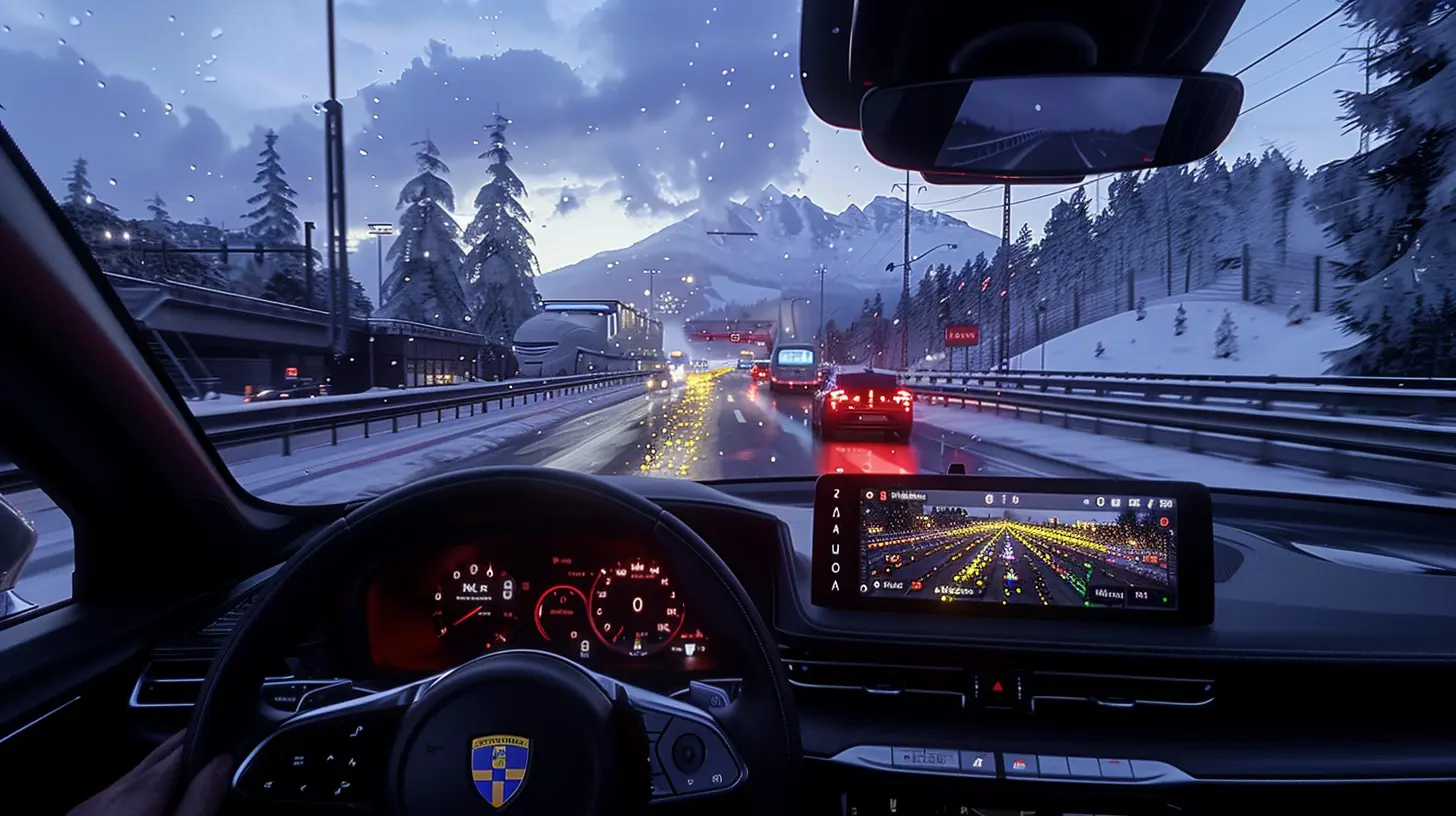Driving Simulators and the Push for Unmatched Vehicular Realism
19 May 2025
Picture this: you're gripping the steering wheel, the sound of the engine reverberates in your ears, the tires grip the asphalt through tight turns, and every bump in the road seems to nudge you just enough to feel real. But you're not in a car. You're sitting in front of a screen, immersed in a driving simulator that feels so lifelike it’s like the machine is reading your mind. Crazy, right? Welcome to the thrilling world of driving simulators, where technology meets precision, and realism isn’t just a goal—it’s an obsession.
From casual gamers looking for some weekend fun to professional racers pushing their limits, driving simulators have revved up not only entertainment but also innovation. Let’s buckle up and take a closer look at why these simulators are all the rage and how they’ve evolved to deliver unmatched vehicular realism.
The Evolution of Driving Simulators
Driving simulators have come a long way since the clunky, pixelated graphics of the early arcade games. Remember the days of sitting in a boxy arcade cabinet playing "OutRun" or "Daytona USA"? Back then, just getting a car to "move" on the screen felt revolutionary. But now? We’re in a whole different ballpark. We're talking about jaw-dropping visuals, hyper-realistic physics engines, and even setups that replicate the very "feel" of being behind the wheel.Modern driving simulators have shifted gears, moving beyond mere entertainment. They’re used for everything from training race car drivers to teaching defensive driving techniques. Today’s simulators don’t just simulate—they convince. Whether it’s the way the suspension feels on gravel roads or how the virtual engine roars differently based on RPMs, everything is crafted to be as true-to-life as possible.
Why Realism Matters in Driving Simulators
Now, you might be wondering: why is everyone so obsessed with realism? What’s wrong with a little arcade-style fun? Well, nothing's wrong with it—arcade racers have their charm—but realism in driving simulators offers more than just "cool factor." It’s about immersion, precision, and practicality.Immersion: Go Beyond the Screen
Realism makes the experience more engaging. You’re not just pressing buttons; you’re genuinely immersed in the act of driving. Imagine feeling the car’s weight shift during sharp corners or the subtle impact of a tire catching a rumble strip. Realistic simulators let you feel in control. It’s not just a game—it’s an experience.Practical Uses: More Than Just a Game
But here’s where things get interesting: that obsession with realism has real-world applications. Professional drivers and racing teams use these simulators to practice and fine-tune their skills. Heck, even automotive engineers use them to test out car designs before they ever hit the road. Think about it. If a simulator can accurately replicate how a car handles at 200 mph, imagine how much safer and more efficient cars can be when fine-tuned using this tech.
How Developers are Achieving Unmatched Realism
Creating realistic driving simulations isn’t a walk in the park—it’s more like assembling a puzzle with thousands of pieces. Every detail matters, from how sunlight reflects off the windshield to how the tires behave on wet pavement. So how do they do it?Hyper-Realistic Physics Engines
Physics is the backbone of vehicular realism. Developers go to extreme lengths to make sure every car in their simulators behaves exactly like it would in reality. They factor in everything: weight distribution, traction, aerodynamics, tire degradation—you name it. Games like Assetto Corsa, iRacing, and rFactor 2 are often praised for nailing these details. Want to feel how a Formula 1 car hugs the curve? These simulators do it justice.Photorealistic Graphics
Visuals are another huge piece of the puzzle. Let’s face it—no matter how realistic the handling feels, if the car looks like something out of an early PlayStation game, the illusion crumbles. That’s why modern simulators use cutting-edge graphics technology, like ray tracing, to deliver lifelike lighting, reflections, and textures. Even the tracks are meticulously scanned using laser technology to capture every crack and crevice.High-Tech Hardware
You know those setups with a steering wheel, pedals, and even a racing chair that vibrates every time you hit a bump? Yeah, that hardware isn’t just for show. Companies are creating rigs that provide tactile feedback to make the experience as immersive as possible. Some setups even let you feel G-forces through hydraulics. It’s like stepping into the cockpit of a real car—minus the actual risk of crashing.
The Impact on Gaming and Beyond
The push for vehicular realism has ripple effects far beyond just gaming. Driving simulators are having a moment in industries we’d never expect.E-Sports: Revving Up the Competition
E-sports has taken driving simulators to a whole new level. Virtual racing leagues like the F1 Esports Series or Gran Turismo Championships have become incredibly popular, and let me tell you, these virtual racers take it just as seriously as their real-life counterparts. Sim racing isn’t just a “game” anymore—it’s a sport with prize money, sponsorships, and growing fanbases.Driver Training and Safety
Driving simulators are also being used for education and training. From teaching new drivers the rules of the road to helping truck drivers learn how to navigate tricky conditions, simulators are a game-changer. They allow people to make mistakes and learn from them in a safe, controlled environment. Plus, they’re a fantastic tool for research on driver behavior.Automotive Testing and Design
Car manufacturers? Oh, they’re all over this. Simulators allow engineers to test out new designs without having to build expensive prototypes. They can tweak designs, test different road conditions, and even evaluate how a car would perform in a crash—all without leaving the R&D lab.The Future of Driving Simulators
So, what’s next? Are we nearing the peak of vehicular realism? Honestly, I wouldn’t bet on it. Technology is a never-ending race, and driving simulators are far from crossing the finish line.Virtual Reality (VR) and Beyond
Virtual reality is already making waves in the simulator world. Slap on a VR headset, and suddenly you’ve got a 360-degree view of the racetrack. Combine that with tactile feedback hardware, and you’ve got an experience so real it’ll have your palms sweating. As VR tech improves, we’re expecting even more immersion—think eye-tracking technology, real-world weather conditions, and maybe even smells. Yep, you might one day "smell" burning rubber in a simulator!Artificial Intelligence (AI)
AI is another game-changer. Imagine opponents that learn how you drive and adapt accordingly. Or a system that can tailor the experience to improve your weaknesses, whether it’s cornering or braking technique. AI could take simulators from “realistic” to “unbelievably lifelike.”Why It All Matters
At the end of the day, driving simulators aren’t just about entertainment—or even learning. They’re about pushing boundaries. Whether it’s making driving safer, helping racers shave milliseconds off their laps, or just giving you an escape into a hyper-realistic world, these simulators represent the best kind of innovation: the kind that makes you forget it's "just a machine."If you’ve ever been on the fence about trying a driving simulator, now’s the time to dive in. Who knows? It might not just change how you see games—it might change how you see cars altogether.
all images in this post were generated using AI tools
Category:
Realism In GamesAuthor:

Greyson McVeigh
Discussion
rate this article
3 comments
April Kirkpatrick
The pursuit of realism in driving simulators enhances immersion, yet risks sacrificing accessibility for casual players.
May 21, 2025 at 3:57 PM

Greyson McVeigh
While realism intensifies immersion, it’s crucial to balance it with accessibility to ensure that casual players can also enjoy and engage with driving simulators.
Fletcher McTiernan
This article brilliantly highlights the latest advancements in driving simulators, showcasing how technology is elevating realism to new heights. Exciting times for racing enthusiasts!
May 21, 2025 at 2:49 AM

Greyson McVeigh
Thank you! I'm glad you enjoyed the article and agree that the advancements in driving simulators are truly exciting for racing enthusiasts.
Zevon Bell
Driving simulators are evolving rapidly, pushing the boundaries of realism with advanced physics, detailed environments, and authentic vehicle dynamics. This not only enhances player immersion but also serves as a valuable tool for real-world driving practice. The future of gaming and driver training is undoubtedly exciting!
May 19, 2025 at 4:31 AM

Greyson McVeigh
Absolutely! The advancements in driving simulators are revolutionizing both gaming and driver training, making the experience more immersive and beneficial than ever before.



